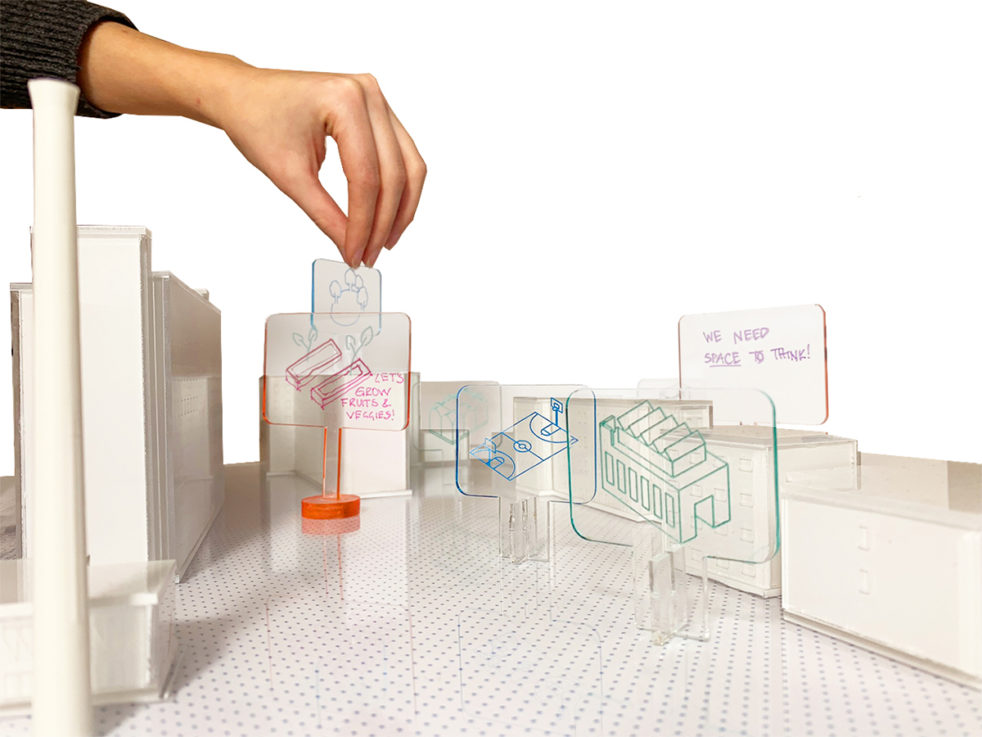Unpacking and Reimagining the American Dream
- Yasmine McBride
- Weitzman School of Design
-
Student Creative Production Grant

Community planning with the University of Orange.
Yasmine McBride’s project will be conducted as a thesis under the Weitzman School of Design’s Masters of Architecture program. It is, in essence, a study of the American Dream and what it means for architecture in America. Why do we want our homes to look the way they do? How were these values constructed? Who benefits from this construction? By studying the “American Dream” typology and juxtaposing it against the fraught history of planning and construction in this country, we can begin to dissect the status quo and consider what it would be like to reimagine these frameworks. Reimagining the aestheticization of the American Dream also necessarily means reimagining the Dream itself. The project will then look at a number of ways to live outside of these confines, including alternative family structures, cooperative living strategies, and ultimately housing typologies that suggest a different conception altogether of what it means to be happy and successful.
The lessons learned from this research will then be tested in the city of Orange, New Jersey, a primarily Black community that has faced redlining, disinvestment, and now gentrification as it is being strategically identified as a “commuter city” to New York. The case study project will be conducted in partnership with the University of Orange, a free school of restorative urbanism founded in 2008 with longtime local community activists. They specialize in education and outreach around the history of racist city planning legislation in their city. By facilitating co-designing and engagement meetings with young adults in Orange, the residents can begin to imagine and visualize the programs they want to see and how they may actually look in their neighborhood, outside of the confines of the typical architect-developer power dynamic. The project intends to give agency and provide services to a community group that is already incredibly knowledgeable about their circumstance by rendering their ideas and priorities with care and architectural precision. It can serve as a tool to not only educate designers and architects about process, engagement, and upending capitalist structures, but also provide a specific community with toolkits for activism, engagement, and growth.